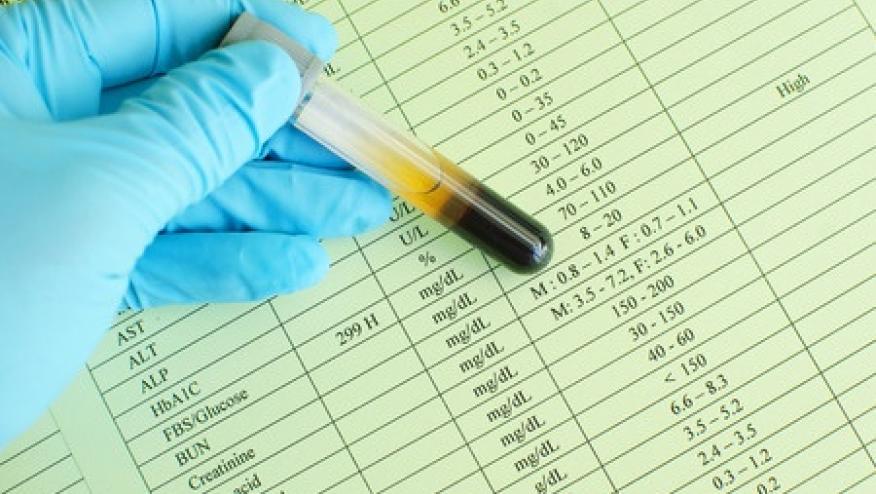Best Labs for Still’s Disease Save

There is no “test” (blood or other) that is solely diagnostic of Still’s disease, but labs can help make a diagnosis or manage disease, and affirm the safety of drugs in use.
Labs in Still’s & Febrile disorders: For people with Still’s disease, many labs may be abnormal and indicate “Inflammation”. It is the uncontrolled inflammation that leads to fever, rash, swollen joints, pleuritis, enlarged lymph nodes, etc. Below is a table of the Lab Tests that are often “abnormal” during fever and active Still’s disease.
|
Lab Tests Commonly Done During the Evaluation & Diagnosis |
||
|
Typically Abnormal |
Occasionally Abnormal |
Normal Values |
|
|
|
|
|
*Markedly elevated from inflammation |
||
- Tests and what to look for in Still's disease:
- CBC will include tests for anemia, white blood cells that may indicate inflammation or infection, and platelets (may be increased during inflammation; or very low with bleeding).
- WBC counts greater than 15,000 can be seen Still’s disease, acute and chronic infections, other inflammatory and autoinflammatory disorders, and some cancers.
- ESR (“sed rate”): Up to 90% of patients with Still’s disease will have an elevated ESR > 50 mm/hr. and over half will have very elevated levels (> 90mm/hr.) – all from inflammation.
- ESR 20-50 would be a low-level elevation that is not diagnostic and seen in MANY conditions
- ESR >50 is seen with inflammation, infection, pregnancy, anemia, kidney disease, chronic lung disease, autoinflammatory (FMF, TRAPS) and autoimmune diseases (lupus or rheumatoid arthritis)
- ESR >100 is seen in fewer conditions including Still’s disease, other autoinflammatory diseases, infection, chronic infections, vasculitis, macrophage activation syndrome
- High CRP:
- Up to 90% of patients with Still’s disease will have an elevated CRP > 1.0 mg/dl (or 10 mg/L).
- Ferritin: Up to 50% of patients with Still’s disease will have an elevated ferritin level.
- Half of patients with Still’s disease will have an elevated ferritin, but alone, this is poorly predictive of Still’s disease
- Extreme elevation of Ferritin (>2000) is more suggestive of Still’s disease. Yet extreme elevation of ferritin may also be seen in other disorders, including macrophage activation syndrome (MAS), HLH (hemophagocytic-lymphohistiocytosis), major liver injury/disease, severe COVID-19 and other severe infections, sepsis (blood poisoning), and iron overload disorders (multiple blood transfusions or hemochromatosis)
- Liver tests includes the AST (SGOT), ALT (SGPT) enzymes coming from liver (or muscle); these may be elevated with inflammation or can be elevated with certain drugs or with hepatitis. The albumin is a protein that is included in a liver panel. The albumin may be low with severe inflammation or malnutrition.
- Creatinine to measure kidney function
- ANA : This test is usually negative in Still’s disease patients.
- RF or CCP: These tests are usually negative in Still’s disease patients.
- Aldolase: This test is abnormal or elevated with inflammation, liver problems or muscle damage. Aldolase is commonly elevated with “active” inflammatory or systemic disease in patients with Still’s disease, autoinflammatory disease or other febrile disorders.
- Uric acid: This test is usually normal in Still’s patients.
- C3 & C4 -These are complement levels. Complement C3 and C4 are proteins involved in your immune system defense and inflammation. C3 and C4 levels are markedly elevated with inflammation.
- CBC will include tests for anemia, white blood cells that may indicate inflammation or infection, and platelets (may be increased during inflammation; or very low with bleeding).
- Monitoring Labs: Laboratory testing or monitoring is usually part of drug safety monitoring with certain medicines used to treat Still’s and autoinflammatory disease patients. Below is a listing of tests needed, based on drug taken and how often they should be repeated.
|
|
||
|
|
|
|
|
|
|
|
|
|
|
|
|
|
|
|
|
|
|
|
|
|
|
|
|
|
|
|
|
|
||
- Imaging Tests for Diagnosis: Imaging tests to establish the diagnosis and identify inflammation involving the organs (lungs, heart, liver, spleen) or lymph nodes is often conducted. Common imaging tests include:
- Chest X-ray (CXR): these are helpful for patients who are short of breath, have persistent chest pain (possibly from pleurisy) or are losing weight. CXR may identify fluid on the outside of the lung (pleuritis) that causes focal chest pain with breathing (pleurisy), or on the outside layer of the heart (pericarditis). CXR may identify enlargement of lymph nodes in the chest or enlargement of the heart.
- MRI of the chest or abdomen can be done to visualize the lungs, heart, liver, spleen, kidneys and lymph nodes and may be able to detect organ or lymph node enlargement or inflammation.
- CT scans of the chest, abdomen or pelvis can be done to visualize the lungs, heart, liver, spleen, kidneys and lymph nodes and may be able to detect organ or lymph node enlargement or inflammation.
- CT or MRI scans are sometimes done to look for causes of unexplained fever.
- Ultrasound of the abdomen is often done to assess the size and status of the liver, spleen, or kidneys.
- (Kidneys are not usually affected by Still’s disease; and are only rarely affected by secondary amyloidosis with long-standing Still’s disease)
For a patient-focused version of this information, please visit https://stillsnow.com/labs-diagnostic-tests-for-stills-and-febrile-disorder/.









If you are a health practitioner, you may Login/Register to comment.
Due to the nature of these comment forums, only health practitioners are allowed to comment at this time.